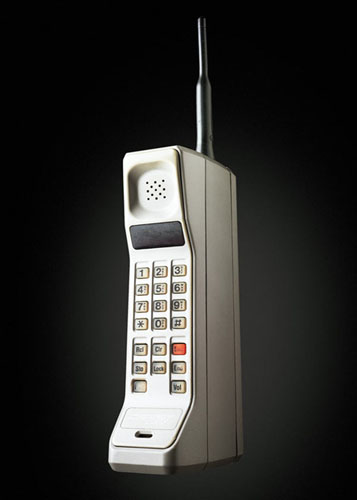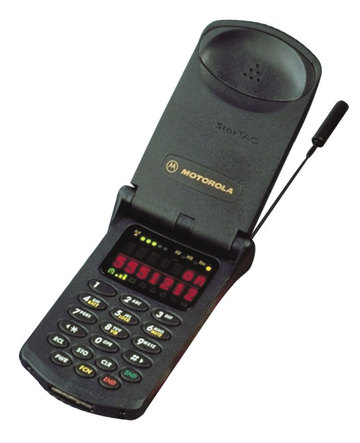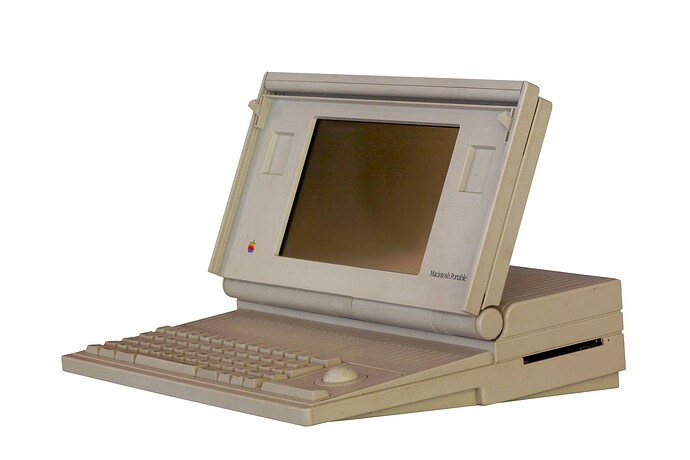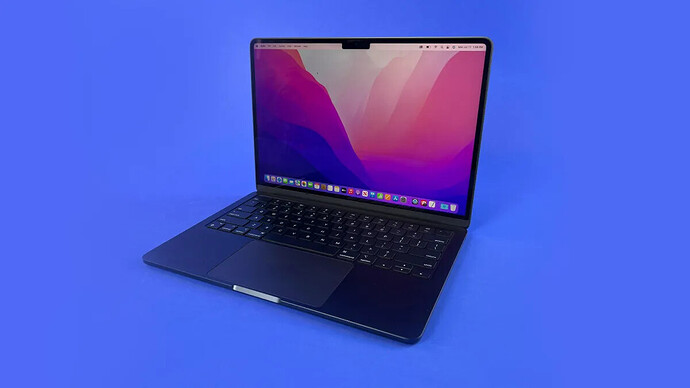I’m glad you have a demo scheduled, Doug, because the product may surprise you. I personally wasn’t ready for such an absorbing experience. My circumstances are much like your own, and my first choice for leisure experiences is always something I can enjoy with my wife, but there are certain genres — science fiction, for one — that she simply doesn’t enjoy, and I often want to explore. I also think this would be the perfect device for an indoor cardio workout. After my demo, she generously offered to split the cost of the Vision Pro with me as a birthday gift. I have agreed gratefully and can’t wait to return to The Apple Store.
I wouldn’t buy one…and cowed by new tech doesn’t have a single thing to do with it. Like the Apple Watch Series 1…this is still pretty much a prototype and has significant issues…weight, battery life, apps, and general usefulness. I like new toys as much as the next guy…but v1 simple doesn’t do anything my wife or I need done. By the time watch series 5 came the tech, features, apps, and it does something useful for us had advanced to being worth buying one…and we just upgraded ourselves to series 9 versions…and at this point would not want to be without one because it’s evolved into something actually useful.
Vision Pro will do the same thing…and by the 3rd or 4th iteration will actually be something worth having…but v1 is simply too little bang am for the buck and too many unresolved issues.
We did the same wit( iPads…the first couple of generations simply weren’t capable enough and had enough apps available to make them anything other than a toy or prototype.
@neil1 makes a good point. We’re all assuming that this initial Vision Pro is only as big and heavy as it is because Apple couldn’t make it any smaller or lighter. If that’s correct, in a few years, the Vision Pro may be significantly smaller, more comfortable, and more portable, such that many more people will want one.
While we can tell the difference between the original iPhone, iPad, and Apple Watch compared to where we are today, the current models are all physically fairly similar to the originals. I think we’re hoping that the Vision Pro is a completely different situation, where we will barely be able to recognize the connection between the original model and where we’ll end up 17, 14, or 10 years later.
Similar is quite the stretch. I’d pay a lot extra to get this gargantuan iPhone 15 back down to a size closer to the original iPhone. I’d wager 3.5" certainly isn’t happening, but the original SE would be a good target.
I seriously hope in terms of weight and size, Apple does not develop the AVP like they did the iPhone. While they might think bigger is always better, I certainly disagree.
Well, I guess part of this depends upon one’s age. I’m way too old to wait 10 to 17 years for this device to “mature,” and after test-driving the Vision Pro, I’ve already found so many uses for for this incredible chef d’oeuvre that it would be ridiculous to wait.
Too expensive? Not for somebody who spent comparable amounts to upgrade my desktop and laptop to Apple Silicon — and the Vision Pro is way more exciting than YET ANOTHER Mac!
But also, I suppose it depends upon just how excited you get by technological breakthroughs. I skipped the Oculus-Rift-descendants from Facebook, because they’re half-baked, and mostly just good for gaming. These are much closer to “toys,” and may even dissuade you from considering the Vision Pro as the future of computing.
But I view the Vision Pro as WAY further down the path to full productivity.
This is the very device I’ve been waiting for, ever since buying my first PC back in 1981. Back then, I was overwhelmed by how much faster I suddenly could write and edit, and re-edit, and re-edit every day I read over my manuscript. I was floored by how much better my copy became, because the agony I of putting yet another manuscript through the secretarial pool suddenly vanished. I could edit as fast as I could see a better way to word a paragraph.
Back then, I thought “how much better could this get?” And I thought, well, what if the page would just appear before my eyes, and I could manipulate a paragraph with my paws, like a piece of clay? What if I could select text just by looking at it, and edit it just by thinking?
Well, the Vision Pro is a giant step in this direction. The UI just floors me —I look at an icon and it lights up, then I open the app just by touching by touching my thumb with my index finger. Presto!
This UI is what it’s all about and I find it flat-out astonishing how this device connects whatever you’re doing directly to your eyes — not once in a while but ALL THE TIME.
When I grok how important this one breakthrough is right now—and how even more gigantic this will become — I want to seize the experience with both hands, right now!
This is NOT a toy — no more than the iPad or Apple Watch. It’s a life-enriching device that will make me healthier, more productive and more fulfilled by just about every task I confront. I can’t wait to review and refine my wildlife photos with the Vision Pro, even now, using the iPad and Mac versions of Lightroom and Photoshop. I also have no doubt some devs are working on native Vision OS photo apps as well. Photo devs who love their work won’t care so much about the audience size today —they’ll be eager to create Vision OS photo apps BECAUSE THEY CAN.
Yes, I happily bought and devoured the first iPad, using it immediately as a research and note-taking tool. I gratefully accepted breakthrough apps such as PDF Expert — and breakthrough devices such as the first 12.9” iPad Pro — as soon as they arrived.
I can remember what a blessed relief it was to have an Authy complication on my Apple Watch, providing me with two-factor authentication with a tap on my wrist. And every day I feel sooo much better taking my pain meds right on time, tracking my workouts in real time, and receiving little rewards for surpassing myself. I lost 30 pounds in three months last year, just in time for my 50-year college reunion —and have kept it off! — thanks to an app on my watch.
I only regret waiting years to buy my first iPhone ( the great 3GS). Happy memories of waiting in line for iPhone 4 and haven’t missed a generation since.
But even the iPad and iPhone, exciting as their touch-UI is to use, were baby steps to the future, compared to the Vision Pro. I’d write more, but my watch just alerted me to a perishable product delivery in my garage. Bye and thanks for the opportunity to explain just how enormous this breakthrough is!
Macs, especially portable Macs - they’re all very different. I’m hoping for (and expecting) this level of improvement.
That was exactly my rationale. My main Mac is an 16" PBP M1 Max and since I like my main computer to be fairly current, I had tentatively planned on upgrading it in 2024 for another $3K. However, the M1 is more than enough power for my needs (it’s actually overkill) so I didn’t need to upgrade. (It wouldn’t have been a total waste as I’d have moved the current Mac down and replace my ancient 2012 MBP that acts as a media center.)
But getting a Vision Pro seemed a lot more fun and interesting than just a slightly better Mac.
BTW, I went to the Oregon coast yesterday (first non-rainy day in months and it was gorgeous) and took several panorama photos and some spatial videos of my dog on the beach. Panos are useless on the phone, but unbelievable on Vision Pro. The device is already changing my photography habits! ![]()
OF COURSE it’s going to be smaller and more comfortable. I think we can take that as a given. That’s what cellphones did for 15 years. From this:

to this:

The Star-tac was the ultimate expression of the cellphone as a phone: the smallest thing that could be stretched from ear to mouth and had a reasonable battery life. Cellphones as smart devices had different constraints (mostly screen size, it turned out) and there there’s been consumer demand to push the size upward. But the VP doesn’t have that latter pressure, I think, and all the other pressure is pushing the size downward (battery size, headset size). The difference between a 1.5 pound VP with an offloaded battery, and a 0.5 pound VP with an onboard battery is a massive one in terms of usability.
I don’t think it will get significantly smaller or lighter…at least not too much. But the battery life needs to improve or it needs a small internal battery to keep it running while you swap battery packs or plug it in to a USB charge able or whatever so that you don’t have to shut down, swap, and then reboot/restore. Some sort of sleep mode needs to be there for swapping batteries and if it only lasts for 10 minutes that’s more than enough. I personally wouldn’t walk around with it so plugging it into a 10 foot USB c or whatever cable at my recliner makes much more sense to me.
The biggest drawback is apps and features…as I said before iPhone 1 and watch 1 were more beta/prototype devices for the ‘gotta have the latest toys’ crowd. Our first iPhones were 3Gs models and then we went to 5S, XS, and then 15 models every 4-5 years. Our first watches were Series 5 because it was actually useful to us by that point and we just upgraded to 9s when they were released…and we kept our 5s for wearing at night to track sleep as our lifestyles really doesn’t support wearing a single one to bed and then charging in the daytime…we’re early risers even after 12 years of retirement and the 5 goes off and on the charger and the 9 gets worn when we get up until bedtime.
I’m not sure the Vision Pro will replace an iPad either…but eh, maybe it will. I am guessing that by the time we get to v3 or perhaps v4 it will have matured enough to be worth it…but if the price is still what it is now then it’s not going to be a good fit for our use case on a cost/benefit basis.
True…but they’ve already done the major migration from discrete chips to the SoC they have today…and that’s not going to get materially smaller and while it might get a little more efficient on a watts per cpu cycle or something like that…the increase in processors and neural engines and graphics cores is going to cancel a lot of that out…so we’re not likely to see anything more than a 10-15% power draw improvement when we go from M3 t way to say M5 or 6 in a couple years. Similarly…battery tech is improving…but it will continue to be mostly incremental improvements so absent them removing some of the components…and it looks like the front facing screens for the eyeball thing is not a real great idea at this point so they could go but how much that changes the weight who knows. And my idea of a small internal battery to maintain it in sleep mode while one swaps the battery pack and then recharges itself from the new battery pack is going to add a little weight. Medium term (3-5 years) I don’t think the size or weight will change all that much, but the headband with the piece over the top appears to mitigate the weight issue for most reviewers.
So…we’re down to more capabilities and better apps…and really better pricing too…to make it something that most people will be willing to shell out for. While I’m a tech geek as much as the next guy…and could afford one without breaking a sweat…the bang for the buck just isn’t there yet and it wouldn’t provide me any capability that I need or want today…but as I said before it will get better and like the watch and iPhone and iPad it will get to the point that it makes sense.
Oh it absolutely will. All the consumer pressure is going to be to make it smaller & more comfortable to wear. The technological limitations are just to going to have to accept that they’ll be overcome in interest of feeding that consumer demand.
Wishful thinking I’m thinking. One can’t legislate scientific progress and while chip die size will keep decreasing from the current 3nm or whatever it is…that tighter spacing will come along with more transistors to provide those extra processors, GPUs, and neural engines so the M6 physical size isn’t going to really change significantly…see the size of M1 compared to M3 in it’s various configurations and there is no significant size change.
Similarly with displays and microphones and speakers which are the other major contributors to size…again while all of those will get incrementally better…it is likely to be capabilities rather than size.
So…where are these magical reductions in size and weight going to come from? Consumers can want them but you can’t beat physics.
As an example…take the original iPad vs the closest equivalent I could fine which is the 10.2 9th. Generation.
Original iPad 9.5x7.5 and 1.5 pounds
9th gen 9.6x6.8 and 1.1 pounds
So…same size and lighter weight but realistically we can’t expect AVP v5 to be significantly lighter because all of the improvements from original iPad to 9th generation are already baked into AVP v1…it might get a little lighter but the rule of diminishing returns says it won’t be the 26% gain the iPad has shown.
A similar comparison with iPhone isn’t really possible since Apple like every other manufacturer deliberately built bigger phones.
I would love for it to be smaller and lighter…but I’m a realist and don’t see where those gains can come from and as I said…one can’t legislate technological progress and at this point improvements in structural components for size and weight as well as battery improvements have been incremental for the past 4 or 5 years.
I don’t have specific ideas about where the weight reduction is going to come from (well, actually, one: battery technology has got a fair bit of headspace) but that second sentence is historically quite wrong. You can often beat physics, because physics has been largely inaccurate (or incomplete, if you want to be polite). People were confident that radios couldn’t get smaller because there was a limit to how small the vacuum tubes could be made. People thought there was a limit on plane speed because propellers couldn’t rotate beyond a certain speed without tearing themselves apart. You can’t beat physics, after all.
I have faith that the insatiable desire of the American economy to satisfy consumer demand will find a way to drive down the size of the VP.
(Oh, and the iPad example doesn’t work – people turn out to want screen sizes of a certain size and so consumer demand is pushing a lower limit to the size, not technology. But just look at how small the bezels are now. Apple’s taken it down as small as consumers want it.
Or you could just look at an iPad mini, which is 7.7 by 5.3 and 0.66 of a pound. That kind of reduction (1.5 pounds to .066) is exactly what I’m seeing for the VP)
And yet, iPhones can’t get smaller because Apple can’t seem to fit better cameras in smaller phones (quite the opposite — they’re about to make them bigger yet again to support better optics) or find better battery technology so they can finally get ~20 hrs from something the size of a silver Dollar.
Apple would do this is they could, but fact is they can’t because the tech is just not available (at least at consumer price points). And this is not a recent limitation — phones have been getting bigger to house better components and larger batteries for ~10 years now. And that is in spite of a tremendous increase in computational power per W (as I’m sure we can agree the A series demonstrated quite impressively).
So, yes, if we give AVP the same 30 years Mac had to go from Macintosh Portable to M1 MBA, we will certainly see lighter/smaller/better, lots of it. But over the course of the next 5 years? I’m certainly not expecting anything dramatic on the weight front (let alone something like glasses instead of goggles). Apple already has tremendous efficiency, if they saw any path to getting the battery onto the headset, they would have likely taken it. But fact is, even with a tethered battery and no buffer battery, the headset is heavy to the point where most reviewers have complained about it. So let’s be realistic. There will no doubt be progress, but there is no reason to expect miracles in the near term.
iPhones could absolutely get smaller* but the consumer doesn’t want them to be. Consumers want screen sizes of a certain size and that limits how small the overall phone can be. If consumers demanded that the phones be as small as possible they’d be a heck of a lot smaller than they are now (with smaller screens, less capable cameras, smaller batteries, etc).
We have no idea what consumers actually want in terms of the capability of something like the Vision Pro but I think we can confidently expect that an overwhelming initial demand will be to make it smaller (and cheaper). It’s just too clunky at the moment. Apple’s almost surely going to try to meet that demand. On what timeline they succeed, I have no idea, but I’m pretty sure they’re going to succeed at some point.
*we literally have seen iPhone minis recently that were substantially smaller than the current iPhone.
I’ve been thinking a lot about this since I got my Vision Pro. I’m not too worried about battery and another materials: there will be ways to make the thing smaller and cheaper.
Some suggestions:
-
get rid of EyeSight feature. Just have a colored LED light that glows when user is immersed, similar to light that shows when video is being recorded.
-
reduce the number of sensors and cameras. As the cameras and algorithms get better, this should be possible.
-
use more plastic instead of metal (lighter/cheaper).
-
perhaps plastic lenses instead of heavy glass?
-
figure out how to not require motors to adjust for variances in the distance between eyes.
-
better power management and new battery tech so battery can be smaller and last just as long.
etc. etc.
But how does Apple solve these more troublesome issues?
-
eyes must be completely covered (sealed) for immersive experience. How do you do that without ski goggle-sized contraption? Even the current (complicated) system isn’t perfect and has some light leakage. I can’t imagine the sunglasses form factor, like many people say they want, would work for Apple’s “spatial computing” approach.
-
handle wearers of glasses and various kinds of eye correction (hard contacts like me). If this is to be truly mainstream tech, it must support correcting for astigmatism (which I read is 40% of the population – maybe that meant just of people who wear glasses/contacts) and other vision issues.
Of course, it is very early days. It’ll be years – maybe a decade – before this changes that dramatically. I think the ski goggles look will be with us for a while. Maybe we’ll just used to it like we did to AirPods in people’s ears.
Yes, and their battery life sucked and their cameras were inferior to the stuff Apple puts in their regular phones. Again: we are about to see yet another iPhone size increase because improving camera quality cannot happen within the confines of the presently available space. There is zero doubt at all here that Apple is bumping up against technological barriers, irrespective of what it is you claim everybody wants or does not want.
My iPhone mini had perfectly fine battery life and the camera was fine as well. I prioritized its size over both of those things. I was in the substantial minority and because of that the consumer pressure was mixed or upward. With the VP, the size pressure is going to be almost all downward. With that as the major pressure, Apple’s almost surely going to manage to substantially reduce the VP size at some point.
They’re not running into technological limits – they could perfectly well put a much smaller camera into the iPhone if consumers wanted a smaller phone. Consumers don’t, and so Apple (and other phone manufacturers) are left fighting over the quality of the camera rather than the size of the phone.
Agreed. I guess it could be argued that the VP is really full-time VR. It only gives the illusion of part-time AR because it’s passing “actual” reallity through to the immersive environment, but it is supplied entirely by the external cameras.
The minimalist device that could theoretically provide this environment would be similar to those old-timey aviator goggles, I guess. Just two circles on a strap with some type of cushion to seal out light.
I don’t see how anything else (e.g., something that looked more like standard eyeglasses, or even laser projectors on stalks) would be able to achieve true VR. The real world would always leak through.

